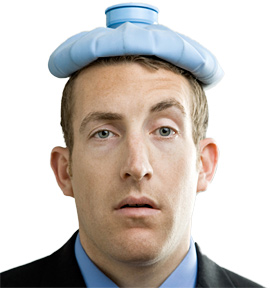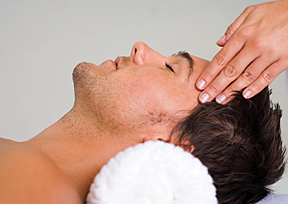What You Can Do to Get Rid of Headaches
Most people with headaches treat themselves with over-the-counter (OTC) pain medications such as aspirin, ibuprofen (Motrin, Advil), acetaminophen (Tylenol) and naproxen (Aleve).
If these fail to provide more than short-term relief (which they often do), other supportive treatments are available. It is important to remember that OTC medications may have side effects and potential interactions with prescription medications. This can lead to a whole host of problems and emphasizes the value of alternatives to drugs. Here are some of the most important (and effective) nonpharmaceutical options for dealing with headaches:
 Chiropractic: I have never seen a headache patient who did not have some type of misalignment of the bones of the neck (cervical spine). It is amazing how much muscle spasm and tension can be caused by misaligned bones. When bones are even slightly out of alignment, the muscles attached to them become stressed, so they become tight. Tight muscles restrict the flow of information through the nerves and circulation through the blood vessels. This can contribute to all sorts of problems, including headaches and neck pain.
Chiropractic: I have never seen a headache patient who did not have some type of misalignment of the bones of the neck (cervical spine). It is amazing how much muscle spasm and tension can be caused by misaligned bones. When bones are even slightly out of alignment, the muscles attached to them become stressed, so they become tight. Tight muscles restrict the flow of information through the nerves and circulation through the blood vessels. This can contribute to all sorts of problems, including headaches and neck pain.
Having your chiropractor adjust those spinal bones back into their normal alignment will reset your system. The joints will have better movement, the muscles can begin to relax on their own and the circulation and nervous systems can start to flow again. The spine and the bones of the extremities really do hold the key to feeling good for the long term.
Massage Therapy: A good therapeutic massage by a certified massage therapist can relax muscle tissue, improve circulation, and clear out the toxins that are trying to drain (lymphatic system). It is astonishing how much muscle tension accompanies any type of headache in the body. The muscles of the neck and upper back are among the most powerful in the body. After all, they have to hold up the head, which can weigh as much as a bowling ball.
 When chiropractic and massage work together, patients will respond especially well to care. I suggest to my patients that they should have their massage and chiropractic treatments within 36 hours of each other. This way, the adjustments and the muscle relaxation can work together.
When chiropractic and massage work together, patients will respond especially well to care. I suggest to my patients that they should have their massage and chiropractic treatments within 36 hours of each other. This way, the adjustments and the muscle relaxation can work together.
Acupuncture: Acupuncture and Oriental medicine, including natural herbs, are other powerful methods to help manage headaches. Acupuncture works with the body's natural energy or chi as it flows through all of the organs and parts of the body. When energy becomes trapped or blocked, it can contribute to a whole host of painful conditions or situations in the body, including headaches. An acupuncturist can expertly insert thin needles into specific spots of your body to release the trapped energy, allow it to flow better and contribute further to relaxing muscle, which will improve circulation and nervous system flow.
Ergonomics: Daily habits and body positions are extremely important when it comes to preventing headaches. For example, I have found that for many people, headaches start with something as simple as their pillow. In general, sleeping on your back is best with a pillow under your neck and head. If you are going to sleep on your side, the pillow needs to be wide enough to span the distance between your shoulders and neck. Custom-made pillows are now available to help give you the proper support you need. Ask your chiropractor for guidance in this area to help ensure you get the pillow that's best for you.

